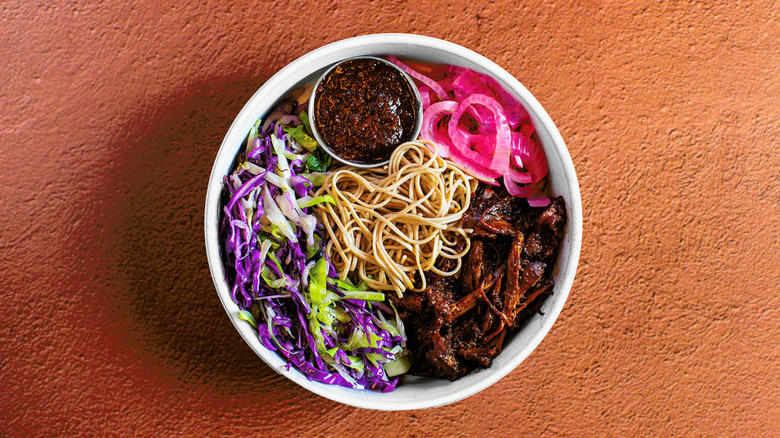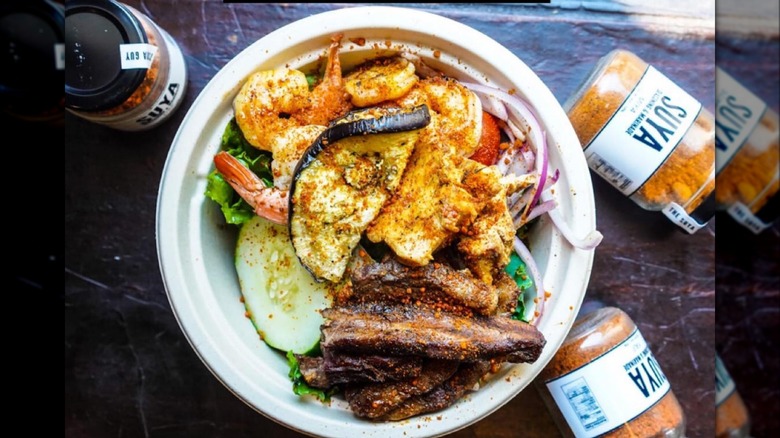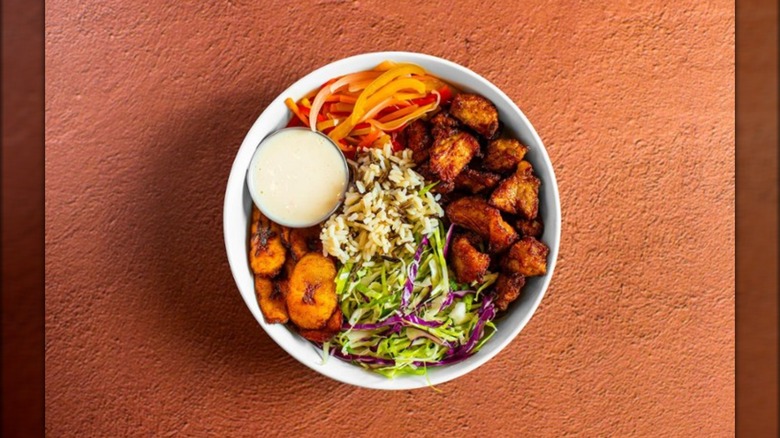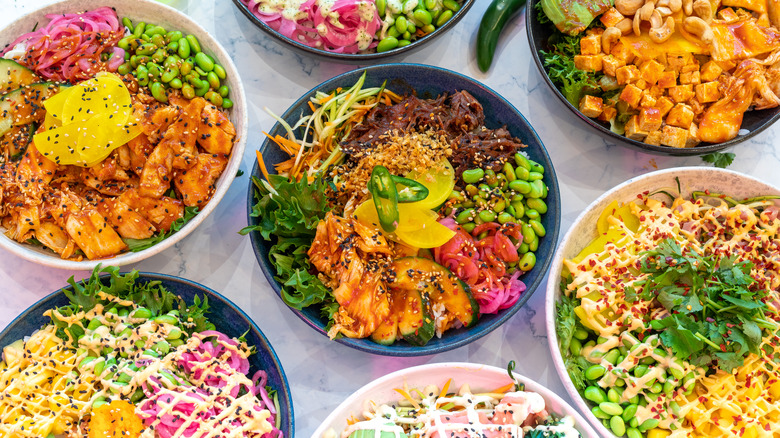The Controversial Rise Of Fast Casual Bowl Restaurants
Sometime in the last decade, "bowl" transformed from a humble piece of dishware into an entire genre of food. Chipotle deconstructed burritos into Burrito Bowls, Sweetgreen and DIG made colorful and "healthy" lunches in bowl form for the Midtown set, and poké (a Hawaiian dish that is traditionally already served in a bowl) was rebranded as the "Poké Bowl" in dozens of fast casual metropolitan eateries.
So what is a capital-B Bowl? It's usually a balanced meal in which a pre-selected combination of starch, vegetable, protein, and sauce are neatly layered, and generally styled so you get bright pops of color from each ingredient. They're usually marketed as a healthy dining option, regardless of their actual nutrition, and are meant to be easy to eat at your desk or pack for the road. Bowls can be breakfast (think about your açai bowls, or the ever-present Playa Bowl chain), lunch, or dinner.
As the bowl trend continues to grow, an unfortunate side effect is that dozens of cuisines from around the world are neatly gentrified and packaged into pale brown recycled paper bowls.
Benefits of the bowl
The bowl-ification of fast casual dining does, however, have some benefits, including customization. Getting to cherry-pick every ingredient in your meal can be beneficial to those with dietary restrictions, or simply picky eaters. They allow you to try a little bit of everything (if that's what you're going for), instead of forcing you to commit to one thing.
It's also a useful way for chefs to introduce lesser-known dishes to the general public in a form they already recognize. Since customers can see their options as they select their meal, they might be more willing to try something unfamiliar that they wouldn't recognize on a traditional menu.
Brooklyn Suya, for example, took the kebab-like Nigerian suya and turned it into a bowl, at a small but always busy kitchen in Crown Heights. Vietnamese dishes like Bun Bo Xao and Bun Thit Nuong have been rebranded as "vermicelli bowls" at many American Vietnamese restaurants. Fast casual poké chains like LA's Sweetfin and New York's Poké Bowl have become single-handedly responsible for the dish's widespread popularity on the Mainland. And even the street cart staple of Chicken & Rice has gotten an elevated "healthy" remake at fast-casual Mediterranean spots like Naya.
OxKale and the oxtail controversy
Recently, the owners of the popular Caribbean restaurant Kokomo in Williamsburg have launched a Caribbean fast casual bowl restaurant called (of course) OxKale. The menu features various bowls that mix traditional Caribbean ingredients like jerk chicken, escovitch, and oxtail with things like kale, quinoa, and soba noodles. The owners, Kevol and Ria Graham, are native New Yorkers from Caribbean families who wanted to bring a taste of the islands to Brooklyn. It's a noble cause, but the opening happens to come at an interesting time in New York for Caribbean food.
Kokomo and OxKale — which are located in Williamsburg — are actually at the opposite end of Brooklyn from most of the city's Caribbean restaurants. The area around Crown Heights (my current stomping grounds) is home to a massive and diverse Caribbean population, who share their food with the neighborhood through festivals and small local restaurants. As these food items have gotten increasingly popular — particularly oxtail — prices have risen, and people aren't happy about it.
Oxtail, which was historically a cheap cut of meat that became incorporated into a lot of soul food and Caribbean food, has risen dramatically in price over the last couple of years. In early 2023, there was even a campaign on Twitter where Black fans of oxtail deliberately spread misinformation about the dish in order to discourage white people from eating it. (For example, by claiming it makes hair — particularly straight hair — fall out.)
Bowls aren't going away anytime soon
When dishes from other cultures and countries go mainstream in the U.S., they tend to go from deli to delicacy in a heartbeat, with rising prices often cutting off access to the people who popularized the dish in the first place. They can also decontextualize dishes, leading to a warped understanding in the public opinion of what exactly a dish is. Traditional names might be simplified to make them easier for Americans to pronounce, or a simplified version of a dish might leave out key ingredients to make it more palatable to a mass market consumer base.
Restaurants are considered to be one of the leading indicators of gentrification, the toe in the water that decides whether an "up and coming" neighborhood is worth widespread economic investment. Fast casual restaurants are more of the final stage of gentrification, proof that your neighborhood has reached mass market appeal, and is no longer affordable for you or anyone you know. But they don't just gentrify neighborhoods; they can gentrify the food itself.
Unfortunately, the fast-casual market is expected to grow by 10% over the next five years (per LinkedIn), so you'll probably be seeing more of these types of restaurants near you. That makes it even more important to support local businesses, especially ones operated by people of color and immigrants. Because it's not just a feel-good decision; it's a smart one that helps keep you and your neighbors from being priced out.




